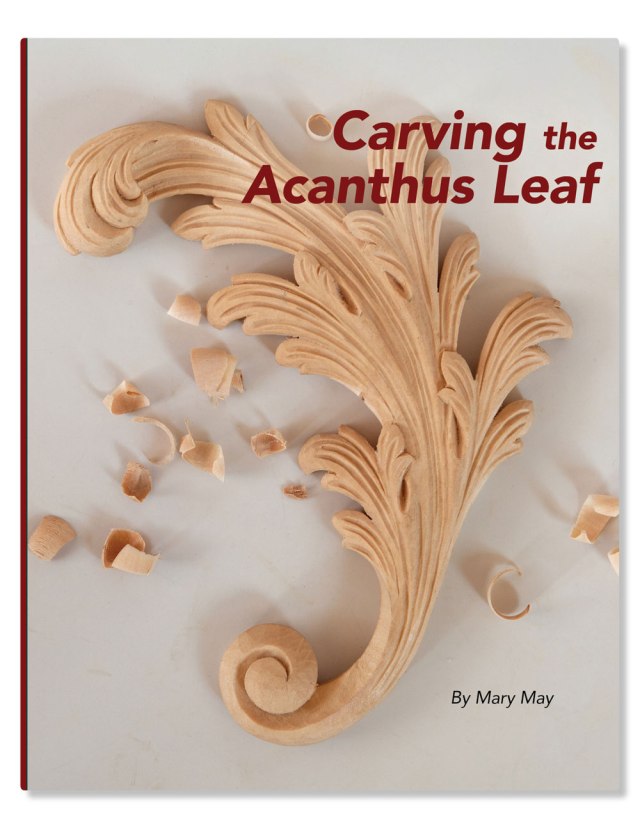
When I first stepped into one of Mary May’s architectural woodcarving classes, I had some vague notion of what it would be like to carve wood. Though I had some interest (I’m interested in making just about anything with wood), woodcarving had never ranked high on my list of interesting avocations, much less passionate ones. But after two days of her instruction, I walked away with an entirely different appreciation for woodcarving and for what Mary had to offer.
As readers of her book, “Carving the Acanthus Leaf,” will quickly find out, Mary is not simply a person who happens to carve wood for a living; she is a woodcarving master par excellence, a truly gifted soul whose work is an expression of some deep passion, driven by faith, and guided by years of diligent apprenticeship and experience.
To most of us, acanthus leaf carvings are a familiar albeit barely understood adornment to historic architectural woodwork. We’ve seen them in the mighty cathedrals of the European Renaissance and in grand public buildings of the 18th and 19th centuries. We’ve probably even seen them on ornate pieces of Chippendale cabinetry. But what Mary May shows us through her book is the robust history of the acanthus leaf from its early Egyptian beginnings through its history in Grecian, Roman and Byzantine architecture; its influence on (though absence from) Viking woodcarvings; its rich revival during the Renaissance; and, ultimately, its decline in the 20th century “machine age.”
As with many aspects of traditional craftsmanship, acanthus leaf carvings have enjoyed a renewal of interest in recent years, perhaps as we humans struggle to maintain our identity amidst an increasingly technological ubiquity. To that end, Mary has offered a gem.
While the book can be through of as nothing less than a how-to guide for woodcarvers, it is much more than that. Steeped in detailed instruction on carving numerous styles of acanthus leaves, Mary’s book weaves the reader through a complex array of history and tradition, of love and romance, and of skill and passion for the art form. This is a uniquely personal text through which the author walks the reader through her own history with woodcarving as a means of inspiring others to take the leap into what may prove to be a highly rewarding journey toward mastery of a new skill. Relating her friendship with Bill Cox, who, at 89 years of age, took up woodcarving and served as her shop helper for six years, Mary encourages others to take up the craft. And, by relating some of her own mistakes along the way, Mary reminds us that we are all human, including the masters.
If you have ever looked at ornate woodcarvings and found yourself at awe of the skill it took to produce them, buy this book. Read it. Get some tools, pick up a piece of basswood, and start carving. You won’t soon regret the experience.